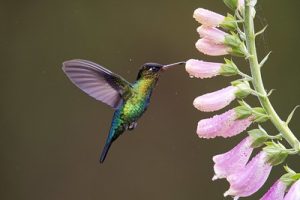
Did you know there are around one million known insect species on the planet? This easily makes the insect the most diverse animal in the world. All insects belong to the animal classification: Insecta, which defines them as a six-legged invertebrate with three body segments and an antenna. The beetle is the most abundant species in the insect world, with almost 400,00 members. However, entomologists estimate there could be as many as 10 million extant insect species.
To the contrary, some species of animals are the only existing member of their genus. For instance, human beings are the only living member of the genus Homo. Mankind’s closest living relative is the chimpanzee, which shares 98.8% of our DNA. Thus, it may be surprising to learn that the chimp is a different genus (Pan) to humans. While it might be fair to say that truly makes us humans one-of-a-kind in the animal world it is certainly not a unique status. Here’s a brief narrative on five distinctive mammals that share our human (homo sapien) one-of-a-kind disposition:
Aardvark

Photo credit: Flickr/CC BY-NC-ND 2.0
The aardvark is a medium-sized, nocturnal, burrowing mammal that is endemic to much of Sub-Saharan Africa. Having a similar appearance and diet, it was once thought to be related to the anteater. However, the aardvark (Orycteropus after) is the only extant species of the order Tubulidentata. It is distantly related to the elephant but split from the Elephantidae family some 80 million years ago.
Sometimes known as the ‘antbear’, aardvark translates from Afrikaans to English as ‘earth pig’. The nocturnal feeders subsist on ants and termites, using their sharp claws and powerful legs to dig out the insects. The aardvark also lives in a deep burrow, where it also raises its offspring. Although the aardvark’s numbers are decreasing due to loss of habitat and the bush meat trade, they are currently listed as “least concern” by the IUCN
Aye-aye

Photo credit: Wikimedia Commons/CC BY 2.0
The aye-aye (Daubentonia madagascariensis), native to Madagascar, is the world’s largest nocturnal primate. Its big eyes, large ears, and rodent-like teeth do not give away the fact it is a species of lemur. Its sinister looks mean it could easily be mistaken for one of the little monsters from the 1984 film ‘Gremlins’. However, the aye-aye is the only extant member of the family ‘Daubentoniidae’.
Once known as the long-fingered lemur, the aye-aye name was given to it by the Madagascans. The aye-aye is a nocturnal, arboreal, jungle dweller, spending most of its life in the forest canopy. Its diet staples are seeds, nuts, fruits, nectar, fungi, honey and insect larvae. The aye-aye is currently classified as ‘Endangered’ by the IUCN. Deforestation and poaching are the main reasons for the decline in numbers. However, local superstition views the aye-aye as evil, so it is often killed without aforethought.
Dugong

Photo credit: Flickr/CC BY 2.0 Deed
The dugong (Dugong dugon) is a marine mammal that is the only living species of the once-diverse family Dugongidae. Its range is the coastal waters of the approximate 40 countries and territories that rim the Indo-West Pacific. The dugong’s nearest living relatives are the 3 extant species of manatee which belong to the same taxonomic order.
The dugong’s common local names include the “sea cow”, the “sea pig” and the “sea camel”. Its diet consists almost entirely of seagrass. While the dugong is legally protected in many countries it is listed by the IUCN as ‘vulnerable’. The threats to its existence come from fishing-related fatalities, habitat degradation, and hunting. Additionally, its sluggish rate of reproduction makes the dugong especially vulnerable to extinction.
Honey Badger

Photo credit: Wikimedia Commons/CC BY-SA 4.0
The honey badger (Mellivora capensis) is a vicious, carnivorous mammal that has a range stretching across Africa, Southwest Asia, and the Indian subcontinent. The sole member of the genus Mellivora, the honey badger gets its name from its love of honey and resemblance to the badger. However, it is only remotely related to the badger as its nearest living relatives are the weasel, skunk and otter.
The honey badger’s other common name is the ratel. It mainly has a carnivorous diet, which includes insects, frogs, tortoises, turtles, lizards, rodents, snakes and birds. However, as well as honey, it will also indulge in eggs, berries, roots and bulbs. The honey badger has a great range but low density and its numbers are in decline. Though protected in some countries, it is relentlessly poisoned and trapped in others. There is currently no accurate survey of the global honey badger population but it is listed as ‘least concern’ by the IUCN.
Koala

Photo credit: Flickr/CC BY 2.0 Deed
Often referred to as the “koala bear”, the koala (Phascolarctos cinereus) is endemic to Australia. While the Aborigines used many names, ‘koala’ was the one adopted by the country’s early white settlers. The ‘bear’ tag came from its general appearance resembling that of a bear. However, the arboreal, herbivorous, marsupial is the only extant member of the family Phascolarctidae, whose closest living relative is the wombat.
The koala has a range that stretches throughout Queensland, New South Wales, Victoria, and South Australia. Koalas typically inhabit open Eucalyptus woodland, as their diet consists almost entirely of eucalypt leaves. The koala is listed as ‘vulnerable’ by the IUCN. The main threats to its existence are loss of habitat due to urbanisation, droughts, bushfires and agricultural expansion.
Header image credit: Wikimedia Commons/CC BY-SA 3.0





